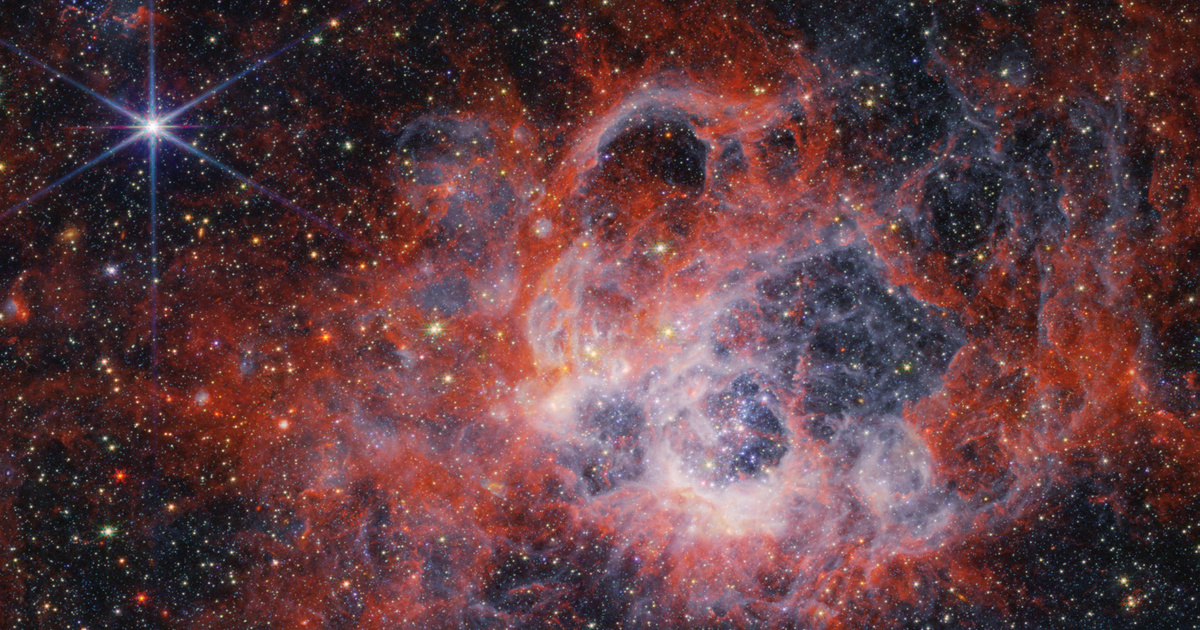In one image, the space telescope used its near-infrared camera, which captured red images, and in the other, the mid-infrared (MIRI) instrument, which images them in faint shades of blue, reads, Life Science page.
In both, you can see cavities and bubbles that young, rapidly growing giant stars have “sculpted” from the gas and dust surrounding them. NASA representatives wrote in their announcement that such detailed images of star birth have never been taken before.
NGC 604 is located in Messier 33, or the Triangle Galaxy. The size of this galaxy is not very large, especially compared to the Milky Way and Andromeda Galaxy.
There are about 200 stars in the region, all of which are either B-type (high temperature) or O-type (stars with higher surface temperatures). Both types are much hotter than the Sun.
According to NASA researchers, it is very rare to find such a concentration of such stars in the nearby universe. There is no similar region within our Milky Way Galaxy.
The physical clouds visible in the images are composed mainly of molecular hydrogen and polycyclic aromatic hydrocarbons (PAHs), which play an important role in star formation. Molecular hydrogen comes from dead stars that exploded in supernovas, but the origin of PAHs remains a mystery. The main difference between the two images is that the MIRI image shows fewer stars because they shine less in the mid-infrared range, and fainter stars are not visible.

5 books
Over 600 amazing, exciting and educational stories!













































